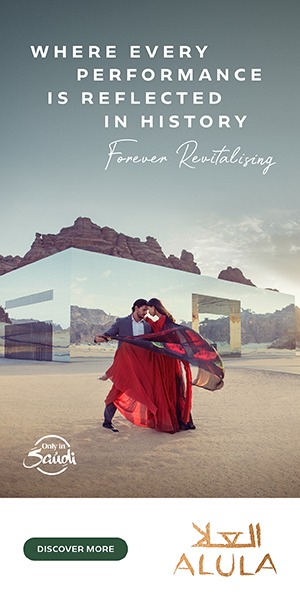The history of beauty has been colourful and unpredictable almost like a movie—full of twists, dramatic entrances, and the occasional regretful flashback (hello, over-plucked brows of the early 2000s!). But could AI really grasp the nuances of how beauty has evolved, especially in a globalised world?
I decided to put ChatGPT to the test, asking it to give me a breakdown of beauty trends through the decades. I specified that we’d like to see everything that was happening in Hollywood and Bollywood in my prompts. The results? A mixed bag of decent analysis and some serious gaps in emotional intelligence. Spoiler alert: AI doesn’t quite understand pandering to the location OR the ‘asker’s’ love for ALL things Bollywood.
1920s: The Era of Jazz and Flapper Dresses
/elle-india/media/post_attachments/wp-content/uploads/2024/08/01-ruby-myers.jpg)
When I asked ChatGPT to break down the beauty trends of the 1920s, it responded with:
“The 1920s were defined by the flapper look—short bobbed hair, dark lips, and heavily lined eyes. Women embraced a more liberated style, rejecting traditional Victorian ideals.”
Alright, not bad. But what about India? The 1920s saw the rise of Indian cinema and early Bollywood, where silent film stars like Sulochana and Devika Rani embodied a beauty that was a mix of traditional Indian aesthetics and Western influences. Indian artists were still following Western makeup trends, but they would Indianise it - sometimes with a little extra kohl or with accessories like Gajras.
1950s: Glamour, Bollywood, and the Winged Liner
/elle-india/media/post_attachments/wp-content/uploads/2024/08/G7WkpjiNFCF4MHokmdvEBewBFk.jpg)
Next, I asked ChatGPT to give me the 411 on 1950s beauty. Here’s what it came up with:
“The 1950s were all about glamour—curled hair, bold red lips, and perfectly winged eyeliner. Think Marilyn Monroe, Grace Kelly, and Elizabeth Taylor.”
Sure AI, but let’s not forget the Bollywood divas who were serving equally iconic looks! Enter Madhubala, with her dreamy eyes and flawless winged liner, and Vyjayanthimala with her glossy hair and that signature glow. Indian cinema was booming, and beauty standards were shifting toward full brows, subtle blush, and red lips—timeless, with a touch of filmy drama.
1970s: Natural Beauty with a Side of Disco
/elle-india/media/post_attachments/wp-content/uploads/2024/08/117944048_3174671205973296_6556273579107409438_n.jpg)
When I asked ChatGPT to analyze beauty in the '70s, it responded with:
“The 1970s were about natural beauty, with loose hair, minimal makeup, and earthy tones. There was also the rise of disco, with glitter, bold colours, and exaggerated makeup.”
Okay, but here’s the tea: while the West was playing with flower-child aesthetics and disco fever, Bollywood was pioneering its unique style. Zeenat Aman and Parveen Babi were the reigning queens of the decade, flaunting their luscious hair and dusky complexions with a mix of glam and free-spirited boho vibes. This is when we mixed the era of the flapper girls with disco and made it a little campy. While that was on one side of the spectrum we also were defining what natural Indian beauty would look like. Long braids, middle parts, natural makeup and nude lips were the markings of the innocent Bollywood leading lady.
1990s: Grunge Meets Glam
/elle-india/media/post_attachments/wp-content/uploads/2024/08/1-1.jpg)
Ah, the ‘90s. An era of chaos in both fashion and beauty. Here’s what ChatGPT had to say:
“The 1990s were all about contrasts—grunge, with its minimalistic, messy aesthetic, and supermodel glam, with bronzed skin and voluminous hair.”
Cool, AI, but where’s the masala? In India, the ‘90s were a full-blown affair of glamour and extravagance. The rise of beauty queens like Aishwarya Rai and Sushmita Sen led to a wave of ultra-glamorous looks, with glossy lips, perfectly blown-out hair, and the era-defining bindis. Indian beauty leaned into vibrant colours and sultry eyes, whether you were an Aishwarya or a Urmila Matondkar in Rangeela mode. The only thing we had in common with the West was the darker lip liners.
2000s: Frosted Lipstick and Bollywood Overload
/elle-india/media/post_attachments/wp-content/uploads/2024/08/6194a1d62e3b1f06137155a0_8c3ff73a-9813-46ce-9922-0918e9331b3c.jpg)
And now, for the cringe era that was the 2000s. I asked ChatGPT about this period, and it responded:
“The early 2000s were defined by frosted lips, over-plucked eyebrows, and heavy bronzer. Y2K fashion influenced beauty, with pop stars like Britney Spears and Christina Aguilera leading the trends.”
Sigh. AI is clearly stuck in the West. Over here in India, we had our own set of questionable choices. Sure, there were a few frosted lipsticks and straightened-to-death hairdos (thanks to our Bollywood icons). But the real 2000s legacy? Kajal. Smudged, heavy, unapologetic kajal. Whether it was the small-town girl next door or the reigning Bollywood queen, kajal was a staple. Pair that with glossy lips and butterfly clips, and you have a true Y2K Bollywood look that had some of us cringing, and others… still kind of nostalgic.
So, What Did I Learn?
If there’s one thing this little experiment with AI taught me, it’s that beauty cannot be confined to a singular narrative. ChatGPT did its best, but beauty—especially in a place as diverse as India—is about more than just makeup trends or the latest ‘it girl.’ It’s a reflection of cultural evolution, cinema, and societal shifts that shape our ideas of what’s beautiful.
While AI managed to pick up on the big, global trends, it was clueless when it came to those intricate details that make Indian beauty so unique. We’ve borrowed, adapted, and fused international trends with our own traditions—creating looks that are equal parts kajal and K-beauty, sarees and street style.
And, while AI might eventually catch up, beauty is ultimately personal. It’s something that can’t always be quantified or predicted. It’s felt, it’s lived, and it’s evolving. So, while I might ask ChatGPT for some makeup tips in the future when it comes to defining the next big trend? I think I’ll stick with my gut.
/elle-india/media/agency_attachments/2024/12/12/2024-12-12t050944592z-2024-11-18t092336231z-czebsydrcd4dzd67f1wr.webp)
/elle-india/media/agency_attachments/2024/12/12/2024-12-12t050944592z-2024-11-18t092336231z-czebsydrcd4dzd67f1wr.webp)
/elle-india/media/media_files/2026/01/06/arts-and-culture_marayacouple_en_static_display_728x90-2026-01-06-15-30-18.jpg)
/elle-india/media/post_attachments/wp-content/uploads/2024/09/BANNER-IMG-3.png)
/elle-india/media/media_files/2025/12/18/arts-and-culture_marayacouple_en_static_display_300x250-2025-12-18-11-05-09.jpg)
